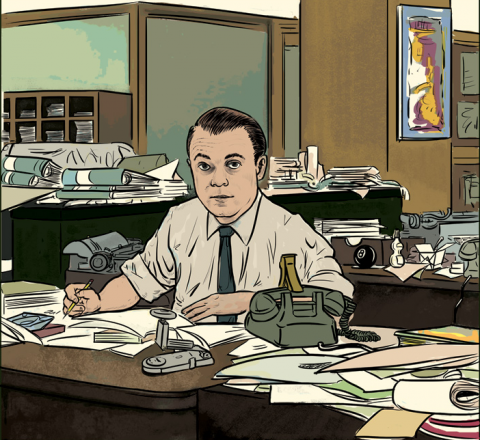Courageous feminist punk band Pussy Riot has received more public exposure than they ever could have hoped for since three members were arrested after a February 21st performance at Moscow’s Christ the Savior Cathedral and charged with “hooliganism.” The band formed last September in direct response to Vladimir Putin’s decision to seek the presidency again in March 2012, and they have demonstrated against his rule ever since, staging confrontational, but non-violent, protest performances in Red Square and other Russian landmarks. They draw much of their energy and inspiration from working-class British Oi! bands of the 80s, the American feminist punk of the 90s Riot Grrrl movement, and from the stalwart Sonic Youth, whose three decade run has put singer/bassist Kim Gordon in the spotlight as a musician, artist, and icon.
In the video interview above from Exploded View, Gordon offers her take on Pussy Riot’s significance and their relevance to the political struggles of women in the U.S.. Gordon reads Pussy Riot as “dissident art… targeted as a weapon” against a system, and its authoritarian leader, that has widely suppressed dissent. Like the notorious online collective Anonymous and their endlessly proliferating Guy Fawkes masks, Pussy Riot eschews the trappings of individual fame, wearing balaclavas to obscure their identities. As they state in a Vice Magazine interview before the arrests, “new members can join the bunch and it does not really matter who takes part in the next act—there can be three of us or eight, like in our last gig on the Red Square, or even 15. Pussy Riot is a pulsating and growing body.” The band keeps its focus on the body, as a growing collective or as a symbol of resistance to patriarchal control. One member explains the band’s name in the Vice interview:
A female sex organ, which is supposed to be receiving and shapeless, suddenly starts a radical rebellion against the cultural order, which tries to constantly define it and show its appropriate place. Sexists have certain ideas about how a woman should behave, and Putin, by the way, also has a couple thoughts on how Russians should live. Fighting against all that—that’s Pussy Riot.
The choice of name—which has forced dozens of newscasters to say the word “pussy” with a straight face—is, in all seriousness, a pointed reference to what Gordon calls a “fear of women,” which may explain what nearly everyone who has an opinion on the case characterizes as an extremely disproportionate sentence for the three convicted members. As Gordon says above, “Clearly Putin is afraid.” Relating the events in Russia to the backlash against women’s legislative gains in this country, Gordon says, “what’s going on in Washington is really indicative of that [fear],” and she wonders “why there aren’t more men who aren’t concerned about it or bringing it up. It’s beyond a women’s issue.” Nevertheless, she strongly implies that the U.S. is ripe for a “pussy riot”—a new punk-rock women’s movement—since “women make natural anarchists and revolutionaries because they’ve always been second-class citizens and had to claw their way up.”
Pussy Riot has cited Sonic Youth’s “Kool Thing” (above) as an influence, a taunting feminist retort to male come-ons that asks its target “are you gonna liberate us girls / From male white corporate oppression?” The unstated answer is, no, he isn’t. As Gordon implies above, and as Pussy Riot explain in an interview with The Guardian below, the only response to so-called “wars on women” everywhere may be a “feminist whip”:
Josh Jones is a doctoral candidate in English at Fordham University and a co-founder and former managing editor of Guernica / A Magazine of Arts and Politics.


